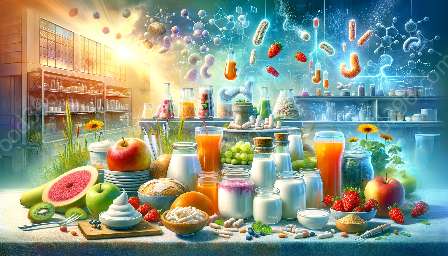Food composition and analysis are integral aspects of nutrition science and the food industry. Understanding the intricate components of our food and how they are analyzed provides valuable insights into our dietary choices and overall health.
The Basics of Food Composition
Food composition refers to the detailed breakdown of the nutrients, bioactive compounds, and other components present in various foods. These components include macronutrients such as carbohydrates, proteins, and fats, as well as micronutrients, vitamins, minerals, and phytochemicals. The composition of a particular food item can vary based on factors such as its origin, processing, and preparation.
Methods of Analysis
Food analysis involves the use of various techniques and methodologies to determine the composition and quality of food items. These may include chemical analysis, spectroscopy, chromatography, and sensory evaluation. Analytical tools help scientists and food professionals identify the nutritional content, flavor profile, and potential contaminants in foods, ensuring consumer safety and product quality.
Nutrient Database and Labeling
Government agencies and nutritional databases compile extensive information on the composition of common and specialty foods. This data is utilized for creating nutrition labels, dietary guidelines, and nutrition research. Understanding food composition is crucial for accurately assessing nutrient intake, addressing dietary deficiencies, and promoting informed food choices.
Technology and Innovation in Food Analysis
Advancements in technology have revolutionized food analysis, allowing for quicker and more precise determination of food composition. Techniques such as DNA sequencing, metabolomics, and spectroscopy have expanded the capabilities of food scientists to identify and quantify the diverse components of foods, enhancing food safety, traceability, and nutritional quality.
Applications in Nutrition Science
Food composition and analysis play a pivotal role in nutrition science. Researchers and health professionals utilize this data to study the impact of diet on health outcomes, develop personalized nutrition plans, and assess the nutritional adequacy of dietary patterns. Understanding the intricate relationship between food composition and human physiology is essential for advancing nutrition knowledge and promoting public health.
Quality Control and Assurance in the Food Industry
Food composition and analysis are vital for ensuring the safety and quality of food products. From raw ingredients to final products, thorough analysis helps food manufacturers adhere to regulatory standards, maintain consistency, and meet consumer preferences. This process involves testing for nutritional content, allergens, contaminants, and authenticity, bolstering consumer confidence in the foods they consume.
The Future of Food Composition and Analysis
As the field of nutrition science continues to evolve, so too will the methods of food composition and analysis. Emerging technologies, interdisciplinary collaborations, and a deeper understanding of the complexity of food matrices will drive innovation in food analysis, offering new insights into the relationship between diet and health.

